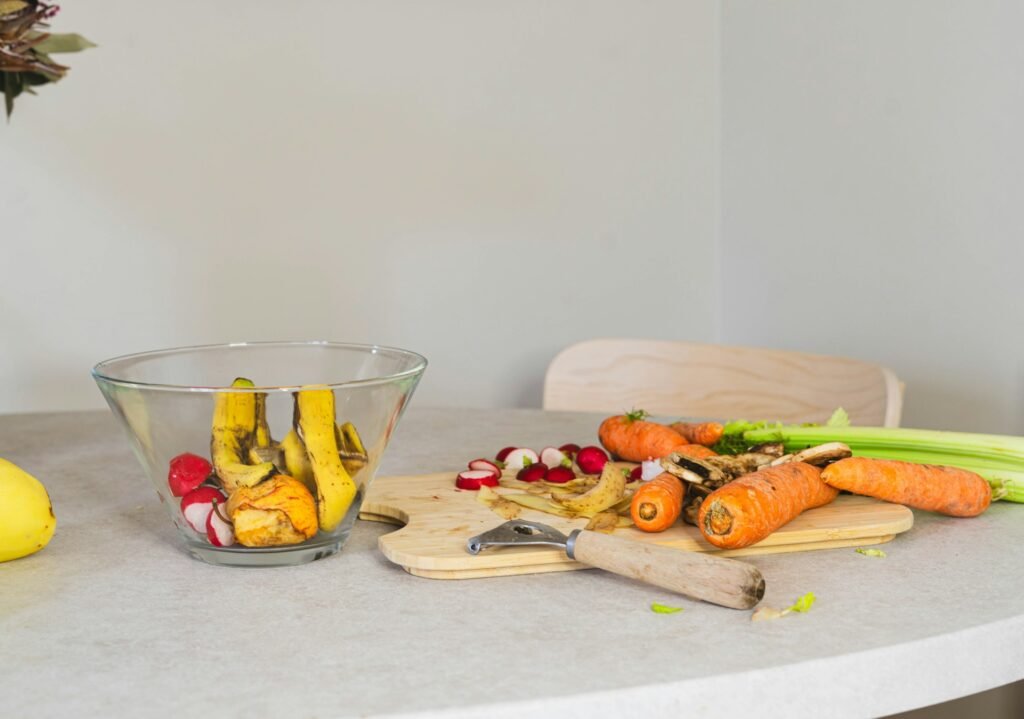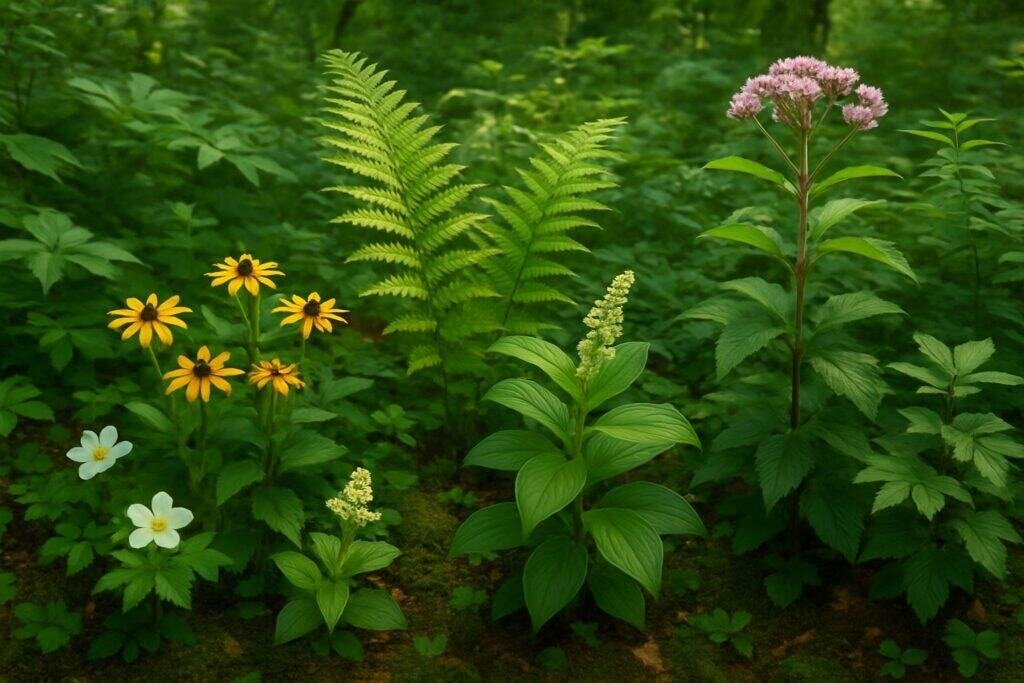Home composting is a simple way to turn organic materials like fruit and vegetable scraps, coffee grounds, and yard trimmings into valuable soil amendments. By understanding the right balance of greens and browns—nitrogen and carbon-rich materials—you can create healthy soil that benefits plant growth. However, it’s important to exclude pet waste, glossy paper, and plastic storage items from your composting bin to avoid contamination and the attraction of unwanted animals.
Backyard composting can significantly reduce the waste stream by diverting solid waste from landfills and decreasing greenhouse gas emissions. Utilizing items such as dry leaves, shredded paper, and untreated wood, along with proper moisture management, ensures a successful decomposition process. Enrich your garden by incorporating compostable kitchen waste, like tea bags and coffee grounds, and enhance potting soil with nutrient-rich compost from your worm bin or compost piles.
Understanding the Basics of Composting
Composting is a natural process that transforms organic materials into a valuable soil amendment. Through the careful layering and management of waste, you can turn everyday scraps into a rich resource for your garden.
Composting is an eco-friendly method that turns organic waste into nutrient-dense soil. In your backyard composting setup, a mix of greens and browns—materials rich in nitrogen and carbon—undergo the composting process. Coffee grounds, fruit and vegetable scraps, and dry leaves are excellent additions, while pet waste and weed seeds must be avoided to prevent health risks and the spread of invasive plants. In a worm bin, red wigglers expedite the decomposition process, creating a wet environment optimal for breaking down scraps. Always remember to balance your compost piles with shredded paper and other carbon sources to maintain a healthy composting ecosystem.
Setting Up Your Composting System
When incorporating pet waste into your composting bin, it’s imperative to understand the risks and proper handling to ensure a safe composting process. Pet waste can contain harmful pathogens; therefore, it should be managed with caution or avoided entirely in home composting systems.
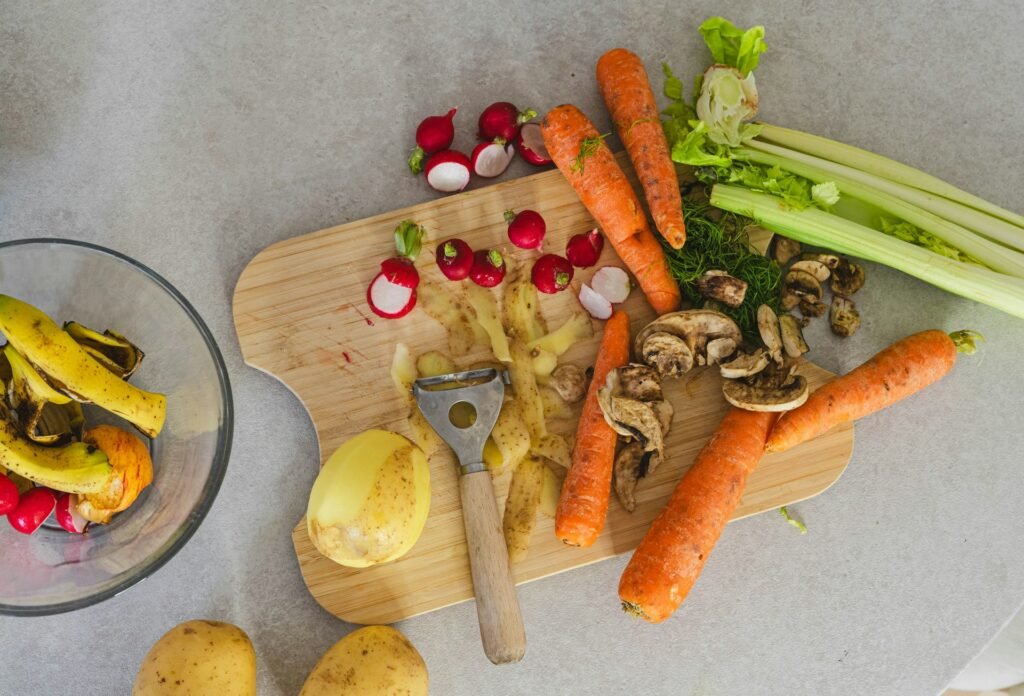
Choosing the Right Location for Your Compost Pile or Bin
The success of your compost system hinges on selecting a spot with the right balance of heat and moisture. Plant material breaks down efficiently when the location receives ample sunlight and has good drainage, facilitating the composting process and yielding rich, fertile compost for your garden.
The Anatomy of a Compost Bin: Essentials for Getting Started
Starting a compost bin requires a mix of food waste, carbon-rich browns, and a watchful eye on moisture levels to discourage fruit flies and ensure successful composting.
Size Matters: Optimal Dimensions for Your Compost
The ideal size for a compost bin is large enough to retain heat and facilitate breakdown, but small enough to manage. A bin measuring approximately 3 feet wide by 3 feet tall is a good starting point, allowing for efficient aeration and decomposition.
Aeration and Ventilation: Keeping Your Compost Healthy
Aeration is critical in maintaining a healthy compost pile. Adequate ventilation allows for oxygen to penetrate the compost, supporting the microbes responsible for breaking down organic matter. This process prevents foul odors and accelerates decomposition.
To Bin or Not to Bin: Exploring Composting Methods
Whether you choose a compost bin or an open pile, each composting method offers unique benefits. Consider your space, the volume of waste, and your gardening needs when selecting the best approach for your home composting efforts.
Trench Composting: An Underground Solution
Trench composting is a method where food waste and compost materials are buried directly in the garden. This composting process enriches the soil and promotes healthy plant growth without the need for above-ground composting methods or bins.
Vermicomposting: Enlisting Worms for Faster Breakdown
Vermicomposting uses worms to transform food scraps into compost quickly. Red wigglers are typically the worms of choice, as they rapidly break down organic matter, resulting in a rich amendment for your soil.
Crafting the Perfect Compost Recipe
Creating a thriving compost requires a delicate balance of compostable materials, each playing a critical role in the decomposition process. The key to successful composting lies in managing the carbon-to-nitrogen ratio, ensuring that the amounts of nitrogen and carbon are conducive to microbial activity.
Compost Ingredients: A Balancing Act
To craft the perfect compost recipe, one must understand the importance of balancing “greens” and “browns.” This balance is not just about adding materials, but about maintaining the correct carbon-to-nitrogen ratio for optimal decomposition.
Carbon-Rich Materials: “Browns” for Your Pile
Carbon-rich materials are essential to a compost pile, providing the “browns” that act as an energy source for the microbes that break down wastes. These materials include dried leaves, straw, wood chips, and paper products. They should be added in larger quantities than nitrogen-rich materials to maintain the ideal carbon-to-nitrogen ratio.
Nitrogen-Packed “Greens”: Accelerating Compost Activity
Nitrogen-packed “greens” are the accelerators of the composting process, infusing the pile with essential nutrients. These include vegetable scraps, grass clippings, coffee grounds, and manure from herbivores. These materials should be carefully balanced with “browns” to prevent excess nitrogen, which can lead to odor problems.
Moisture and Temperature: Creating an Ideal Environment
The success of composting also hinges on maintaining adequate moisture and temperature. The compost should be as wet as a wrung-out sponge, facilitating microbial activity without causing anaerobic conditions. Temperature is equally crucial, with the ideal range being between 135-160 degrees Fahrenheit to encourage decomposition while killing pathogens.
The Role of Oxygen in Composting
Oxygen plays a vital role in the composting process, supporting aerobic bacteria that break down organic matter efficiently. To provide sufficient oxygen, the compost pile must be turned regularly, ensuring that materials do not become compacted and that aerobic conditions are maintained throughout the composting process.
The Comprehensive List of Compostable Items
Compostable items encompass a wide range of organic materials that can be broken down into nutrient-rich soil. These include kitchen scraps such as fruit and vegetable peelings, paper towels, and tea leaves, as well as yard waste like grass clippings and leaves.
Kitchen Scraps and Food Waste to Compost
Kitchen scraps and food waste are valuable additions to the compost pile. Eggshells, fruit and vegetable peelings, coffee grounds, and stale bread contribute necessary nutrients and structure, aiding the composting process.
Yard Trimmings and Organic Matter for Composting
Yard trimmings and organic matter are the backbone of any garden compost. Grass clippings, leaves, and small branches provide both nitrogen and carbon, essential elements for the composting process, while also improving the pile’s aeration.
Unexpected Compostable Items Around Your Home
Surprisingly, many household items are compostable. Nail clippings, egg shells, and wood ash can be added to your compost pile. These items contribute to the diversity of the composting process, helping to create a rich and balanced compost.
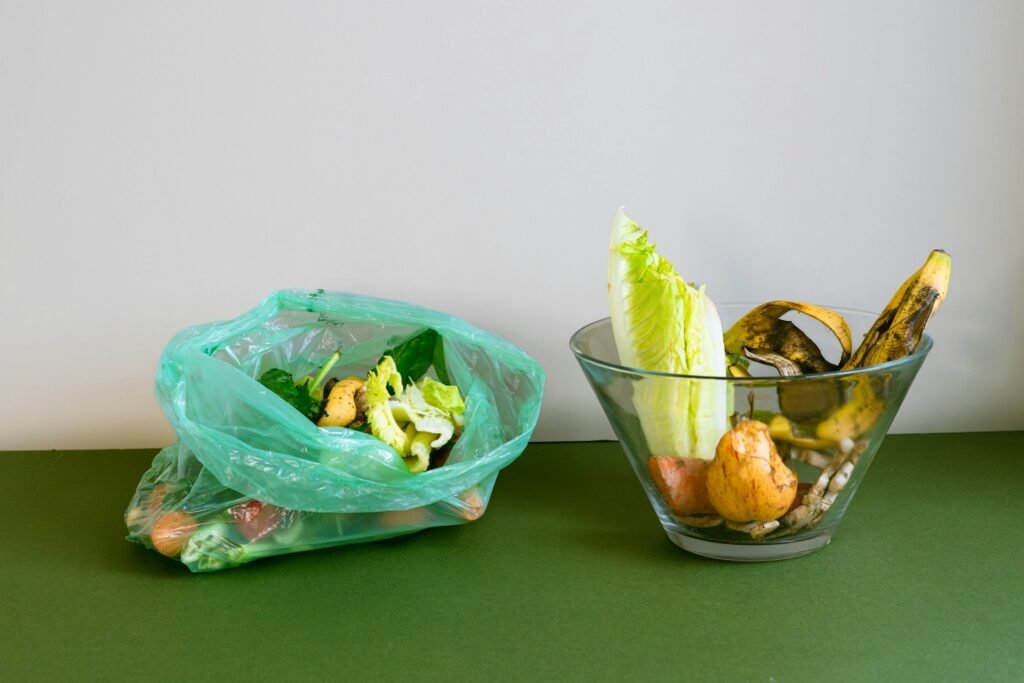
Identifying Non-Compostable Materials
It’s essential to recognize materials that should not be included in garden compost to ensure a healthy and efficient decomposition process.
The No-No List: Items to Exclude from Your Compost
While paper towels and tea leaves are generally compostable, their inclusion in compost should be evaluated based on dyes and chemical treatments that may be harmful to the composting process.
Animal products and dairy should be excluded from home composting due to the potential for odor problems and attracting pests. On a large-scale composting level, specialized facilities can manage these types of food waste, but at home, they can create problems and carry pathogens detrimental to the composting process.
Colored papers and inorganic matter like plastics and metals have no place in the compost bin. The inks and chemicals on colored papers can be toxic to the compost ecosystem, while inorganic materials simply do not break down and can contaminate the final compost product.
Understanding Why Certain Items Aren’t Compost-Friendly
While composting is an effective way to recycle organic matter, not all items are suitable for the compost bin. Certain materials can attract pests, cause foul odors, or even introduce diseases to the compost pile. For instance, items that are not rich in nutrients essential for composting, such as plastics and metals, serve no beneficial purpose in the decomposition process. Moreover, they can contaminate the compost and ultimately the soil, harming the environment rather than helping it. Understanding the balance of materials is crucial to maintaining a healthy composting process.
Improving Your Composting Practices
Improving composting practices starts with a keen observation of the composting process. Regularly turning the pile ensures even decomposition and prevents the development of anaerobic spots that can slow down the process. It’s also important to maintain the right balance between ‘greens’ and ‘browns’ to facilitate the ideal conditions for breakdown. Monitoring moisture levels and ensuring adequate aeration will lead to a more efficient composting process, yielding rich, fertile compost ready for use in the garden.
Troubleshooting Common Composting Issues
Composting can sometimes present challenges such as unpleasant smells, pests, or a pile that simply won’t decompose. These issues often stem from imbalances in the composting materials, such as too much moisture or an excess of nitrogen-rich greens without enough carbon-rich browns. Adjusting the ratios, enhancing aeration, and adding dry materials to absorb excess moisture can resolve these common composting problems, leading to a more effective and less troublesome composting operation.
Harvesting Your Compost: The Signs of Completion
Finished compost will be dark, crumbly, and have an earthy smell, indicating it is ready to nourish garden soil.
Using Your Finished Compost: Tips and Tricks
Utilizing finished compost effectively can greatly enhance garden soil. It’s best to mix compost into garden beds at the start of the growing season to provide an essential element for plant growth. Finished compost can also be used as a valuable fertilizer that’s free from harmful chemicals. To ensure the compost is fully decomposed, it’s important to screen it before use, removing any large, unbroken pieces that can be returned to the compost bin or pile for further breakdown.
Expanding Beyond Personal Composting
For those who wish to contribute more significantly to sustainability efforts, community composting offers a collective approach to managing organic waste. Participants can contribute their kitchen scraps and yard waste to a centralized composting facility, sometimes facilitated by municipal composting services. This not only fosters community engagement but also amplifies the environmental benefits by handling larger volumes of organic matter than individual compost bins could manage.
Community Composting: Participating in a Collective Effort
Community composting is a shared endeavor that allows individuals to participate in a large-scale composting process. By collaborating with neighbors or local organizations, community members can contribute to and benefit from a collective composting system. This approach not only reduces the amount of waste each household needs to manage but also creates a resource of rich compost that can be used to support local gardens and green spaces.
When You Can’t DIY: Seeking Composting Services
For those who lack the space or time for home composting, seeking composting services is a practical solution. Many cities offer curbside pickup of organic materials, which are then processed at industrial composting facilities. This option allows individuals to still participate in waste reduction efforts without the need to manage their composting system, making sustainable living practices more accessible to all.
Embracing a Sustainable Lifestyle Through Composting
Composting is a cornerstone of sustainable living, transforming waste into a resource and reducing the overall environmental footprint. By incorporating composting into daily routines, individuals can play an active role in waste reduction, soil enrichment, and the conservation of natural resources. Sustainability is not just about large-scale changes; small, consistent actions like composting can have a profound impact over time.
Composting as a Way to Reduce Personal Food Waste
Composting provides an excellent opportunity to reduce personal food waste. By composting kitchen scraps, such as fruit and vegetable peels, coffee grounds, and eggshells, individuals can turn potential waste into a resource. Adding brown materials like shredded newspaper helps to balance the compost pile while avoiding fats and oils that can disrupt the composting process. Through mindful composting practices, one can minimize their contribution to landfill waste and create a beneficial product for their garden.
Water Conservation Through Effective Composting Practices
Effective composting practices can contribute to water conservation by improving soil structure and water retention. Composted soil retains moisture more effectively, reducing the need for frequent watering. This is particularly beneficial during periods of dry weather when water resources can become scarce. By enhancing soil with compost, gardeners can not only support plant health but also contribute to sustainable water use.
Perfecting Your Home Composting Strategy
To perfect a home composting strategy, one must consider the balance of green materials and composting materials. Green materials, rich in nitrogen, should be matched with carbon-rich browns to create an optimal environment for decomposition. Utilizing chicken wire can help deter pests, and maintaining the right moisture level is crucial, especially during dry weather. To prevent foul odors, aeration is key, and materials like pizza boxes should be added sparingly as they can contain inks and residues that are not ideal for composting.
Fruit Fly Prevention and Other Safety Measures
Preventing fruit flies and ensuring safety in composting involves a few key practices. Covering food waste with carbon-rich browns like leaves and straw can deter fruit flies and reduce odors. Additionally, keeping the compost pile moist but not wet, and turning it regularly, will help maintain a healthy environment that’s unattractive to pests. Implementing these measures ensures a safe and efficient composting process.
How to Use Your Homegrown Compost
Homegrown compost can be used as an amendment to enrich garden soil, making it an essential element for healthy garden beds. When using compost, consider it as a valuable fertilizer that introduces beneficial microorganisms without the need for harmful chemicals. It’s important to ensure that the compost is fully matured before applying it to the garden to prevent the spread of any undecomposed seeds or plant diseases. Compost can also be used to make a nutrient-rich tea for plants, further enhancing its utility as a natural soil enhancer.
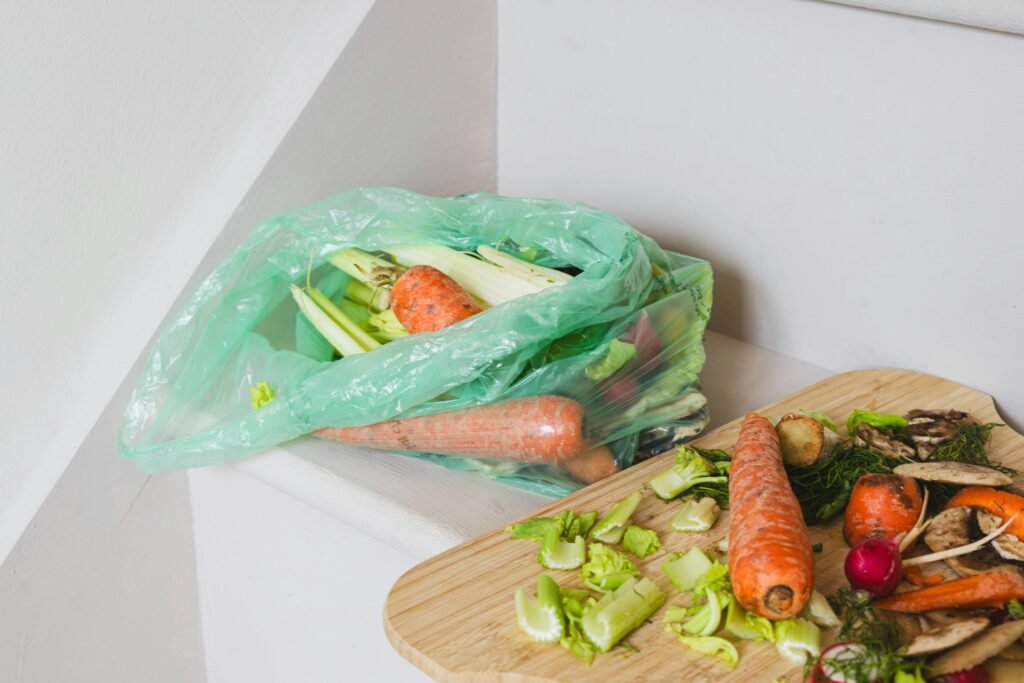
Harvesting the Benefits: Composting for a Greener Earth
Composting offers numerous benefits for a greener Earth, from reducing the volume of plant diseases in gardens to creating a sustainable cycle of nutrients. Compost bins, which can be easily purchased online or built at home, are an excellent way to start turning household and yard waste into a resource. By embracing composting, individuals contribute to a healthier planet, closing the loop from scraps to soil and back to the dinner table.
Closing the Loop: From Scraps to Soil to Supper
Embracing the full circle of sustainability, food, and other organic waste gain new life through composting. In a robust composting system, scraps transform into nutrient-rich soil, a process that’s both simple and profound. By incorporating a worm composter, the breakdown of organic materials accelerates, turning kitchen leftovers into a gardener’s gold. This enriched soil then nurtures the garden, producing fresh produce and starting the cycle anew. It’s a beautiful symphony of renewal where waste reduction and resourcefulness lead to bountiful suppers, straight from the earth.

